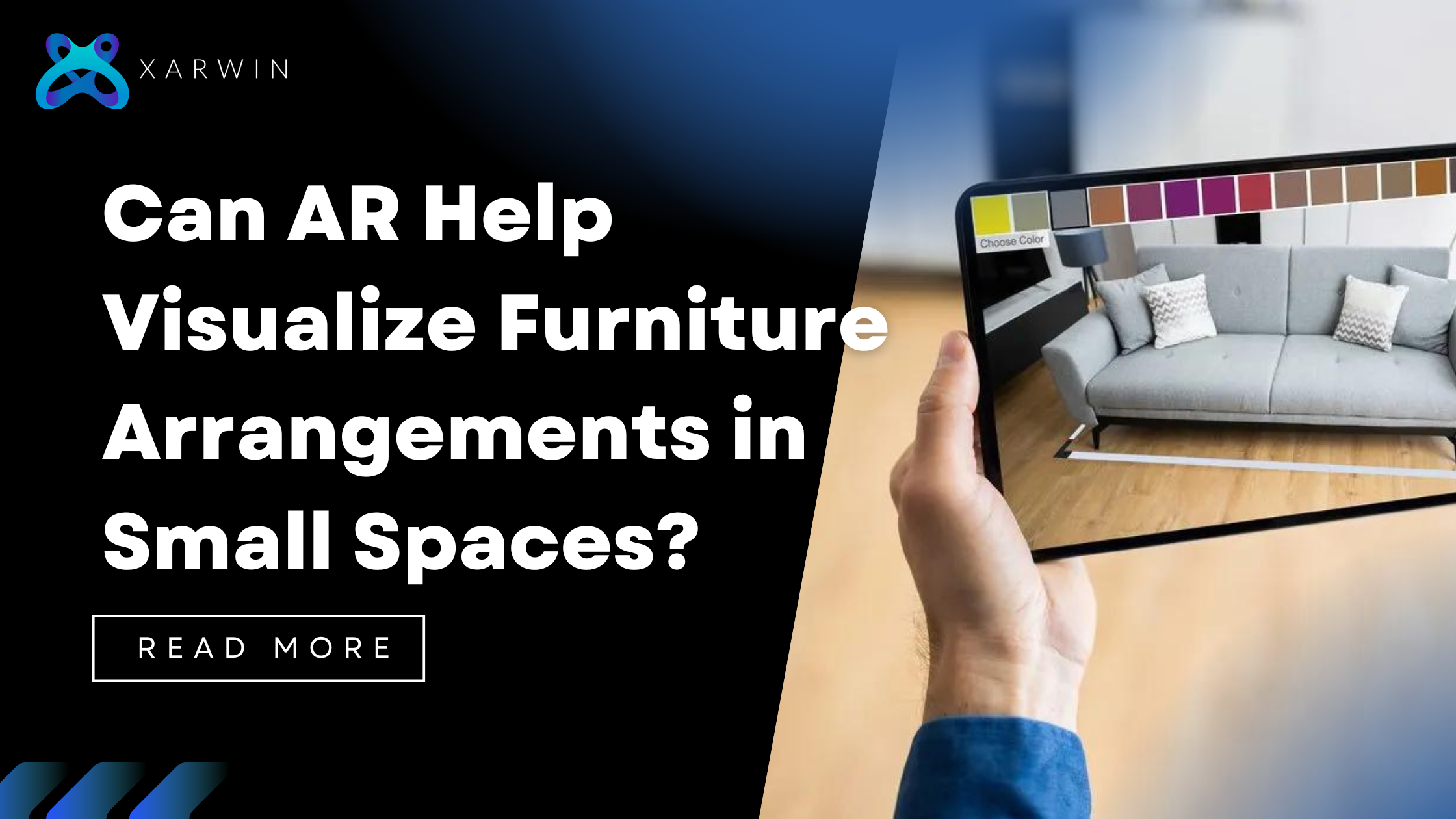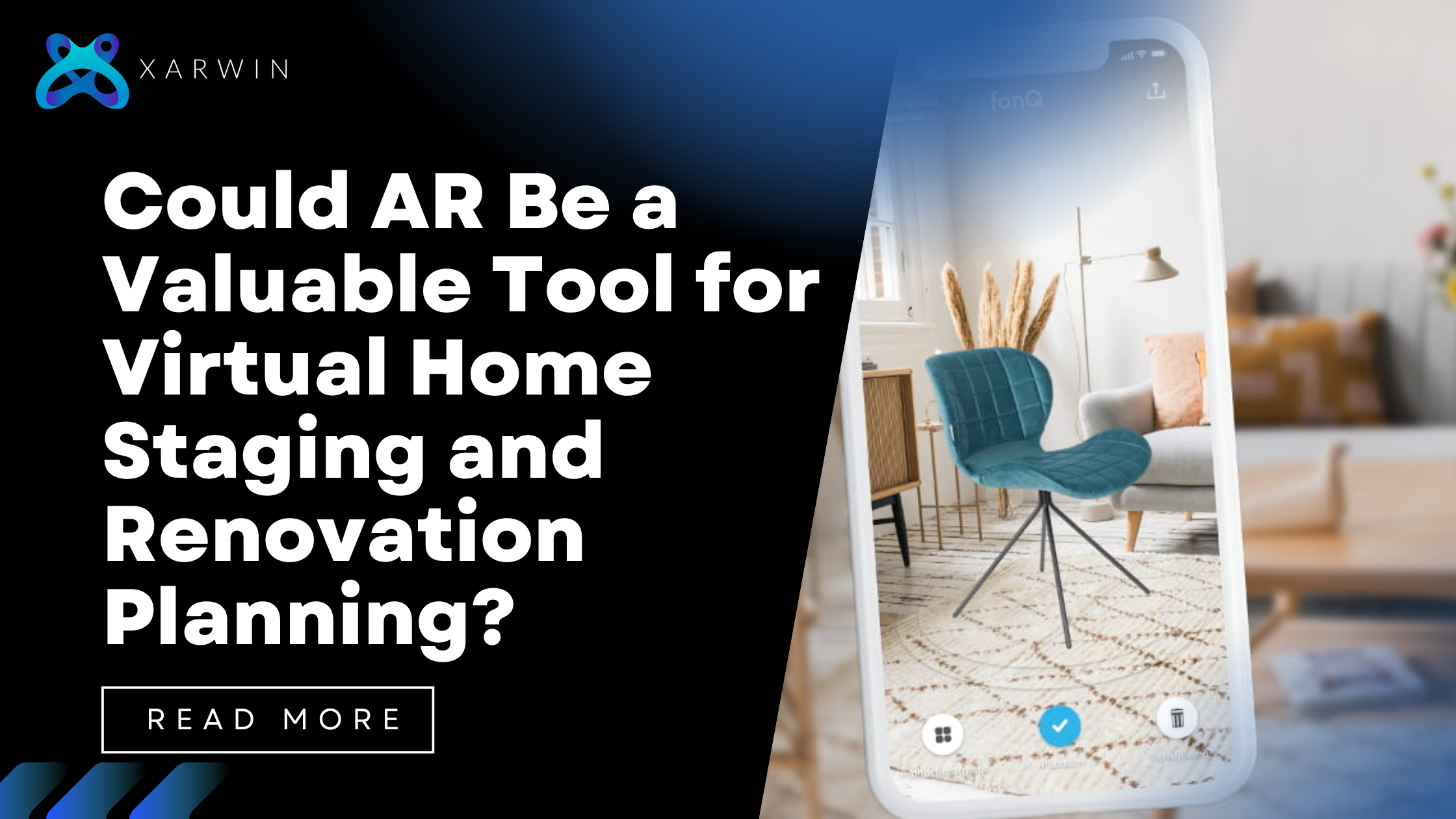The Role of AR in Interior Design:
In the realm of interior design, AR serves as a bridge between imagination and reality. It assists designers and homeowners in understanding how different furniture pieces will look and fit within a space, empowering them to make informed decisions before making any modifications. This capability is precious in small spaces, where every decision significantly impacts usability and visual appeal.
Benefits of Using AR for Furniture Arrangements in Small Spaces:
1. Spatial Awareness:
One of the primary challenges in arranging furniture in small spaces is accurately gauging spatial dimensions. AR technology allows users to place virtual furniture within their physical environment, providing a realistic sense of scale and proportion. This spatial awareness empowers users to make informed decisions about furniture placement, ensuring optimal use of available space.
2. Visualization:
AR enhances visualization by overlaying virtual furniture onto the real-world environment in real-time. Users can see how different pieces complement each other and the overall aesthetic of the space. This visual representation enables quick experimentation with various arrangements, facilitating the exploration of different design possibilities without the need for physical rearrangement.
3. Customization:
AR platforms often offer a wide range of furniture models and styles, allowing users to customize their virtual spaces to suit their preferences. Whether selecting a modern sofa or a vintage coffee table, users can preview how each piece contributes to the room’s ambience. This customization capability ensures that furniture choices align with the desired aesthetic and functionality of the space.
4. Collaboration:
AR facilitates collaboration between designers, homeowners, and other stakeholders involved in the design process. Multiple users can view and interact with the same virtual space simultaneously, regardless of their physical location. This collaborative feature streamlines communication enables real-time feedback and fosters consensus on furniture arrangements and design decisions.
5. Cost-Effective Design:
Traditional methods of furniture arrangement often involve trial and error, which can be time-consuming and costly. AR mitigates these risks by allowing users to experiment with different layouts virtually before committing to any purchases or physical changes. By minimizing the need for revisions and alterations, AR ultimately saves time and money in the design process.
Case Studies: Real-World Applications of AR in Small Space Design:
1. IKEA Place:
IKEA, a global leader in furniture retail, has embraced AR technology through its IKEA Place app. This app allows users to virtually place true-to-scale 3D models of IKEA furniture in their homes using their smartphones or tablets. By leveraging AR, IKEA empowers customers to visualize how its furniture will look and fit in their specific spaces, thereby enhancing the online shopping experience and reducing the likelihood of returns.
2. Houzz AR:
Houzz, a popular platform for home remodeling and design, offers an AR feature that enables users to virtually place furniture and decor products from its extensive catalog in their homes. With Houzz AR, users can experiment with different styles, colors, and layouts, helping them make informed design decisions. This immersive experience enhances user engagement and encourages exploration of Houzz’s product offerings.
3. Wayfair Spaces:
Wayfair, an online furniture and home goods retailer, has introduced Wayfair Spaces, an AR-powered interior design app. With Wayfair Spaces, users can visualize how Wayfair’s products will look and fit in their homes by placing virtual furniture and decor items in real time. This interactive experience facilitates confident purchasing decisions and reduces the uncertainty associated with buying furniture online, particularly for small spaces.
Challenges and Future Directions:
Though the AR tool is imminent in revolutionizing furniture arrangements in small spaces, some emerging issues need to be considered. Technical shortfalls, like the placement of objects and the quality level of rendered images, need to be fixed to further improve the user’s experience. Furthermore, the extensive application of AR and integration of AR into regularly used design models are factors that ensure using this technology can make a substantial difference in interior design.
Some of the most pioneering hardware in the development of AR involves wearable devices and smart glasses, among others, through which more immersive and intuitive experiences can be presented. Besides, artificial intelligence, as well as machine learning, may become the driving force that AR systems use to give personalized design suggestions which depend on clients’ choice and the space they can utilize.
Conclusion:
Within augmented reality, interior designing is getting a complete overhaul, especially in the case of Lilliputian spaces. Incorporating AR in the furniture industry allows users and designers to see, adjust, and improve furniture layouts with unusual precision, unlike anything before. Apart from the basic feature of creating spatial awareness, AR makes collaboration and cost-effective design possible.
As a result, it is one of those all-encompassing trends that are leaving their mark on the landscape of interior design. Along with augmented reality (AR) development and thorough integration into interaction within design workspaces, the potential for the production of highly aesthetic and functional designs even in confined spaces is the endeavor of the future.
As a trailblazer in augmented reality (AR), Xarwin combines innovation with a user-centric approach to redefine industry standards. Its team of expert engineers, designers, and strategists excels in crafting immersive AR experiences across various sectors. With each project, the company not only meets current demands but also shapes future trends, establishing itself as a leading force in the AR landscape.





